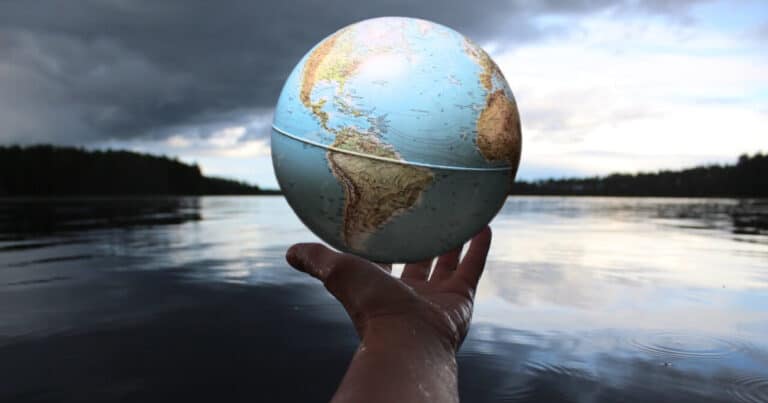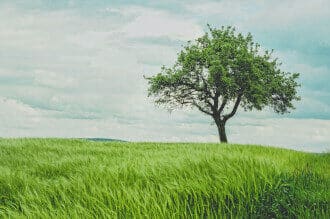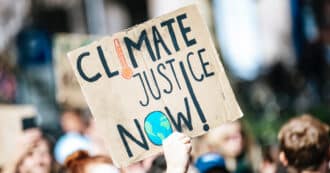By Alana House – Faith groups are constantly at the forefront of human rights initiatives, working as a support system for victims who have suffered a variety of abuse. Religious groups are adept at recognizing the most vulnerable groups within society and work diligently to assist them. This too is the case as human beings acknowledge that the latest target of abuse is the earth itself, suffering at the hands of human-caused climate change.
Scientific Findings Lead To Climate Change Initiatives
Over the years scientists studying climate change have provided evidence that due to human activity, the Earth is facing several environmental issues including global warming. Overuse of fossil fuels has led to pollution on the land, sea and even in our atmosphere through carbon emissions.
Research has shown that the amount of carbon dioxide in the atmosphere has risen about 25% when compared to pre industrial levels, before the year 1958. Scientists have documented that the presence of greenhouse gases has caused a rise in the Earth’s average temperature. Effects of the climate crisis can be witnessed in the destruction and degradation of the environment due to melting glaciers, deforestation and desertification.
People from all of the planet have begun to strive for environmental justice through the establishment of climate action projects. These initiatives to help reverse climate change include engineering renewable energy systems, establishing sustainable agriculture practices, and employing strategies to protect natural organisms and the environment.
Examples Of Faith Supported Environmental Sustainability
Governments have displayed limited support in terms of climate change politics. Unfortunately, the presence of a yearly climate conference or a world council hindered by bureaucratic restraints is just not enough to take on the climate crisis. It has become the sacred duty of faith groups to band together in order to protect god’s creation.
Faith Groups Recognizing Climate Change
Indigenous peoples, Hindu groups, Sikh temples, faith traditions and all world’s religions must be part of making addressing climate change a moral imperative. Religious leaders and religious organizations must become an example of good stewards to other world leaders and for future generations in their fight against climate change.
Faith based organizations that play a major role in the fight against climate change include national places of worship. The Protestant Church of England has developed a plan of action, known as the RouteMap, that will be utilized to achieve carbon neutrality by 2030. In order to reduce their carbon footprint, the Church looks to end their reliance on fossil fuels and implement methods of clean energy in their buildings. The National Lutheran Church of Finland and Sweden share similar goals, planning to be climate neutral in the year 2030 as well.
Many faith leaders continue to be the embodiment of righteous action which includes promoting the care and protection of Mother Earth. One of the faith leaders that has stepped out among the others is Pope Francis, the head of the Catholic Church and sovereign of the Vatican City state. In 2015, Pope Francis made his first comment on climate change, backing the validity of climate science, as few faith leaders had done before. The Pope asserted that climate change is one of the greatest threats facing humanity, and that it is the responsibility of the faith community to engage in climate action to ensure the Earth’s longevity.
Nonprofit Faith Communities
Connecting the communities of belief, politics and science together is exemplified through the United Nations Faith for Earth initiative. The mission of UNEP faith, is to engage with the interfaith community in order to achieve the sustainable development goals. This branch of the United Nations continues to encourage faith communities to become stakeholders in the climate crisis, while also taking part in tangible initiatives such as environmental cleanups.
The organization Green Faith is a conglomerate of individuals from varying faiths who have come together in a movement to help save the environment and curb climate change. This grassroots initiative conducts demonstrations backed by religious communities to bring about justice for the environment. One example of this includes a Multi-faith climate finance campaign, in which people of faith call on financial leaders to end their support of fossil fuel companies and deforestation.
After recognizing the power that comes from faith based donations, one company saw an opportunity to properly utilize these charitable funds. Faith Invest is a nonprofit organization that promotes communities of faith to effectively and consistently invest in projects to create a sustainable planet. While any charity may be seen as helpful, Faith Invest recognizes that if the endowment does not go towards sustainable initiatives, then it is simply money wasted on a recurring problem.
Religion, Rainbows and Climate Change Responsibility
Genesis 9:13 “I have set My bow in the clouds, and it shall serve as a sign of the covenant between Me and the Earth.”
Let’s look in Eco Bible to see why religious communities must take religious responsibility for leading the way in everything to do with caring for Earth.
Rabbi Samson Raphael Hirsch explains that the symbolism of the rainbow is its multiple colors in one cohesive structure. God’s pact of peace with humankind and all of creation is represented by this eternal symbol of diversity. Today we know that our global ecosystem is extremely complex and interlinked, even beyond what humans can currently comprehend. Our actions in diverting a single river or allowing the use of a single refrigerant chemical can have devastating effects on aspects of the planet we don’t even know about–including even species not yet identified–that could affect us for generations to come.
Nachmanides teaches that the rainbow signifies an upside-down bow and serves as “a reminder of peace.” The feet of the rainbow are bent downward to show that the Heavenly “shooting” (the torrential rains) has ceased. Rabbi Shlomo Riskin explains the meaning of Nachmanides’ teaching: “Ancient cultures fought their wars with the bow and arrow, and the side which surrendered, pursuing peace instead of war, would express their will to do so by raising an inverted bow that the enemy could see.
Similarly, God places an inverted bow in the heavens as a sign that He is no longer warring against humanity.” The rainbow testifies to the Creator’s intention for life on our planet to continue to exist. It is a sign that God desires the existence of the world and not its destruction.
God Did Not Promise That Humanity Will Not destroy Itself!
Rabbi Riskin continues that the symbolism of the rainbow extends beyond God’s commitment–to encompass humans: “The rainbow is a half-picture, lacking a second half to complete the circle of wholeness. God can pledge not to destroy humanity, but since He created humanity with freedom of choice, He cannot guarantee that humanity will not destroy itself.” Yet the rabbis make clear that God does not want us to destroy creation either.
At present, humanity is emitting over 36 billion tons of CO2 per year into the atmosphere. In the past 800,000 years, atmospheric concentrations of CO2 did not exceed 300 parts per million (ppm). Yet people have dramatically increased the concentration of CO2 in the atmosphere in the past 200 years, to 417 parts per million and rising every year. A consensus of climate scientists understands that humans are directly causing climate change. Through our consumption, it is as if we are shooting carbon arrows into the atmosphere, inadvertently waging war on God’s creation.
Taking Responsibility
In Israel, one first sees rainbows after the Jewish New Year and Day of Atonement, when the winter rains begin to fall in October. According to the Ziv HaZohar commentary, the rainbow as a whole reminds us to turn our hearts to improve our actions. Perhaps the timing of the rainbow’s appearance, soon after the period of repentance, can motivate each of us to keep improving ourselves and become better servants of the Creator and collective stewards of creation.”
* Featured image source







